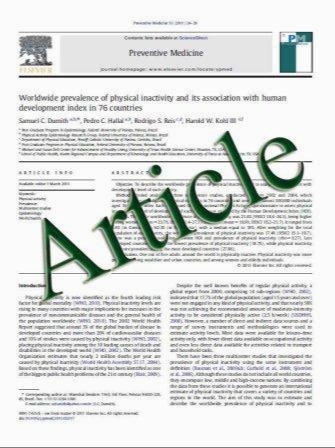Exercise-induced modulation of cardiac lipid content in healthy lean young men
- نوع فایل : کتاب
- زبان : انگلیسی
- مؤلف : L. Bilet T. van de Weijer M. K. C. Hesselink J. F. C. Glatz H. J. Lamb J. Wildberger M. E. Kooi P. Schrauwen V. B. Schrauwen-Hinderlin
- چاپ و سال / کشور: 2011
Description
Cardiac lipid accumulation is associated with decreased cardiac function and energy status (PCr/ATP). It has been suggested that elevated plasma fatty acid (FA) concentrations are responsible for the cardiac lipid accumulation. Therefore, the aim of the present study was to investigate if elevating plasma FA concentrations by exercise results in an increased cardiac lipid content, and if this influences cardiac function and energy status. Eleven male subjects (age 25.4 ± 1.1 years, BMI 23.6 ± 0.8 kg/m2) performed a 2-h cycling protocol, once while staying fasted and once while ingesting glucose, to create a state of high versus low plasma FA concentrations, respectively. Cardiac lipid content was measured by proton magnetic resonance spectroscopy (1H-MRS) at baseline, directly after exercise and again 4 h post-exercise, together with systolic function (by multi-slice cine-MRI) and cardiac energy status (by 31P-MRS). Plasma FA concentrations were increased threefold during exercise and ninefold during recovery in the fasted state compared with the glucose-fed state (p\0.01). Cardiac lipid content was elevated at the end of the fasted test day (from 0.26 ± 0.04 to 0.44 ± 0.04%, p = 0.003), while it did not change with glucose supplementation (from 0.32 ± 0.03 to 0.26 ± 0.05%, p = 0.272). Furthermore, PCr/ATP was decreased by 32% in the high plasma FA state compared with the low FA state (n = 6, p = 0.014). However, in the high FA state, the ejection fraction 4 h post-exercise was higher compared with the low FA state (63 ± 2 vs. 59 ± 2%, p = 0.018). Elevated plasma FA concentrations, induced by exercise in the fasted state, lead to increased cardiac lipid content, but do not acutely hamper systolic function. Although the lower cardiac energy status is in line with a lipotoxic action of cardiac lipid content, a causal relationship cannot be proven.
Basic Res Cardiol (2011) 106:307–315 Received: 18 October 2010 / Revised: 17 November 2010 / Accepted: 13 December 2010 / Published online: 23 December 2010


